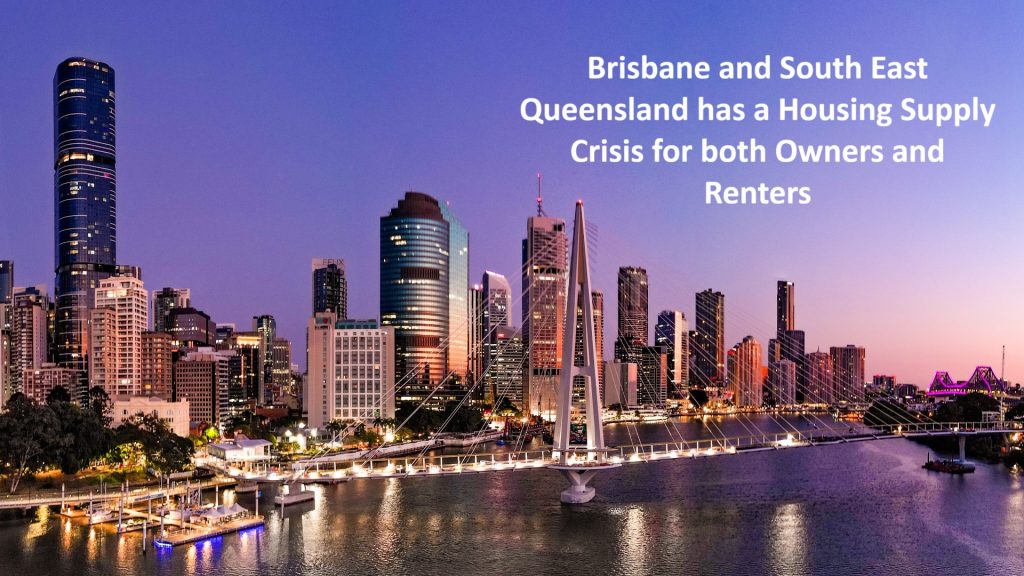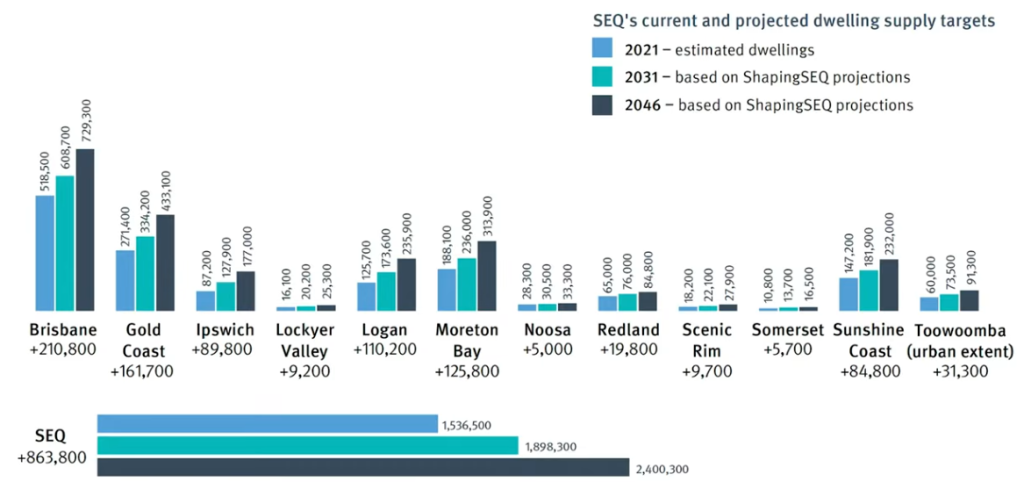September 2025

Why Brisbane & South East Queensland Remain a Standout Investment Opportunity
A Decade of Strong Growth – With More to Come
As of August 2025, Brisbane’s median dwelling values are up 7.9% over the past year, 76% over the last five years, and an incredible 93% across the decade. In simple terms, a property purchased in Brisbane 10 years ago has almost doubled in value.
Importantly, most of this uplift has come in just the past three to four years, as Brisbane outpaced nearly every other capital city. Despite this growth, the fundamentals show that it’s still worth buying and or Investing into Brisbane and South East Queensland today.
Population Growth Driving Demand
South East Queensland’s population is forecast to grow by 2.2 million more residents by 2046—that’s about 1,600 new people every week. Brisbane alone is set to absorb more than 460,000 people, while areas like Logan, Ipswich and Moreton Bay are expected to see population increases of 90% to 105%.
This migration and immigration is placing extraordinary pressure on both rental and ownership markets, as new residents who want to Rent or Own, compete for limited housing options.
Read further on the impacts on Property Prices and Rents as a direct result of Immigration here.
Supply Choke Points – A Market drastically Undersupplied
While demand has surged, supply has failed to keep up:
- Vacancy rates remain at just under 1% across Greater Brisbane—well below the 3% “balanced market” benchmark.
- Rental listings are snapped up immediately, pushing rents to record highs.
- Dwelling approvals have collapsed, with Queensland falling nearly 30% behind national housing targets.
- As of August 2025, there were just 16,106 properties listed for sale in Brisbane, compared to the long-term average of 28,000–30,000.
This chronic undersupply is the single biggest driver keeping upward pressure on both property prices and rents.
Incredibly, against what the Albanese Government are saying, the gap between demand, which is increasing rapidly, and supply is widening – not narrowing. Meaning supply will further compound in the lack of supply. And builders are cautious about building developments as their margins become almost too tight to be worth the effort and massive investment they incur. See explanation and Australian Property Market Update here. Current figures clearly demonstrate that construction is lagging well behind what is required with only around 3,427 dwellings being approved in July 2025.
The REIQ worriedly states “Queensland will fall well short of its target. As of April 2024, there were around 3,022 building approvals in QLD, with current supply far below the required 4,100 homes per month, needed to keep pace with population growth and affordability goals. This equates to falling 11,900 under target (24%). This will further compound undersupply whilst QLD population continues to grow.
Can you now also identify with the investment potential this problem will provide you the investor?
SEQ requires around 900,000 new dwellings by 2046 that is 34,000 per year !!
from 1.5m today to 2.4m
Why This Matters for Investors
For investors, these conditions create a rare window of opportunity:
- High rental yields: With vacancy rates at historic lows, rental competition is fierce. Investors can secure healthy, consistent income.
- Capital growth potential: With demand outstripping supply for years to come, prices are expected to keep trending upwards—albeit at a more sustainable pace what you would expect in a ‘normal’ market.
- Government infrastructure pipeline: Over $100 billion in planned infrastructure, coupled with the 2032 Brisbane Olympics, will continue to boost demand and liveability. Historically, Olympic Games result in capital growth.
The Shift Toward Higher Density Living
Another key factor investors must understand is the shift in housing stock. The Queensland Government has set ambitious targets, with 70% of new dwellings to come from infill development—townhouses, low-rise and high-rise apartments—while just 30% will be from new greenfield estates.
For investors, this means:
- Well-located units and townhouses are gaining demand faster than detached houses. To further qualify, units and townhouses are suited to Brisbane.
- Demographic shifts—smaller households, downsizers, and affordability challenges—are boosting demand for one- and two-bedroom dwellings. And affordability is driving demand on townhouses.
- There is major demand for Detached Housing in the Regional’s of Greater Brisbane and also South East Queensland, where developers tend not to build apartments / units. See more on SEQ Property Investment Opportunities here.
The Outlook: Sustainable, Long-Term Growth
Domain forecasts Brisbane’s house prices to rise another 5% in 2025–26, taking the median house price to over $1.09 million. Units are forecast to grow at a similar rate, to around $701,000.
Shifting away from the explosive boom of recent years—but it’s exactly what makes Brisbane appealing. The city is now entering a period of sustained, long-term growth backed by genuine fundamentals: population growth, infrastructure investment, undersupply of dwellings to own or rent, and a rental market under siege from this very undersupply.
Why You Should Act Now
Waiting on the sidelines in Brisbane could mean missing out on capital growth and rental returns while construction costs continue to rise, migration inflows, and supply shortages persist.
Well-located properties in Brisbane, Greater Brisbane, and South East Queensland are set to remain in high demand from both buyers and renters.
👉 If you’re considering investing in Brisbane or South East Queensland, now is the time to position yourself ahead of the next growth cycle.



3 thoughts on “Queensland Property Update”